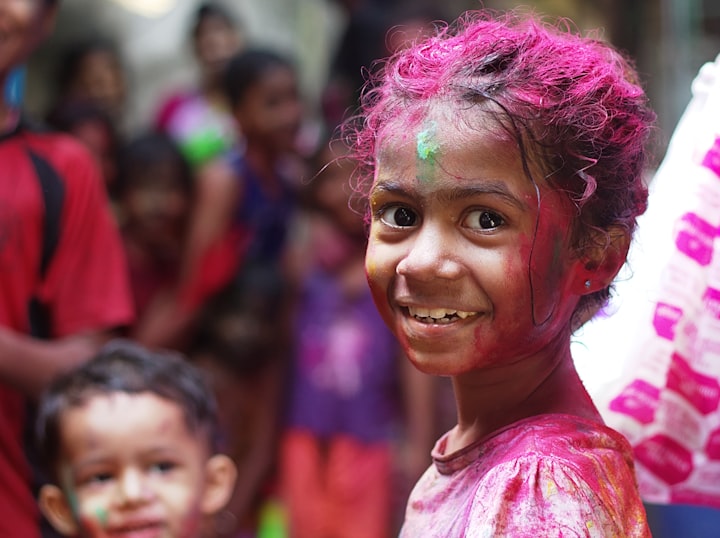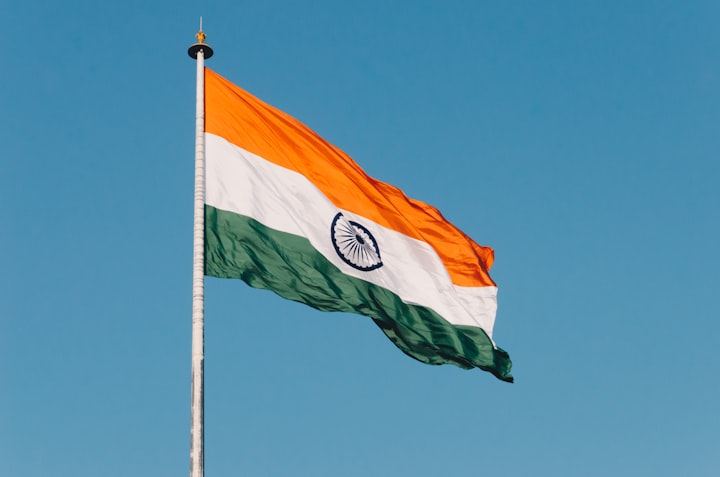15 interesting things about Indain culture
Discover the Wonders of Indian Culture

India is a land of rich cultural heritage and diversity. With a history spanning thousands of years, India has evolved into a unique and fascinating blend of various religions, traditions, and beliefs. Here are 15 interesting things about Indian culture that you might not know:
1. India is home to one of the world's oldest civilizations, the Indus Valley Civilization, which dates back to 2500 BC.
The Indus Valley Civilization, also known as the Harappan Civilization, was a Bronze Age civilization that flourished in the northwestern region of the Indian subcontinent. It is considered one of the world's first urban civilizations, with advanced systems of urban planning and sanitation. The civilization was known for its impressive architecture, such as the Great Bath, and for its sophisticated system of writing, which is yet to be fully deciphered.
2. India has a diverse range of religions, including Hinduism, Islam, Christianity, Sikhism, and Buddhism, among others.
India is known for its religious diversity, with people from different faiths coexisting in harmony. Hinduism is the dominant religion, with around 80% of the population identifying as Hindus. Islam is the second-largest religion, followed by Christianity, Sikhism, and Buddhism, among others. Religious tolerance and inclusiveness are deeply ingrained in Indian culture, with people from different faiths often celebrating each other's festivals.
3. Indian cuisine is renowned for its use of spices and herbs. The country is the world's largest producer and exporter of spices, including cinnamon, cardamom, and pepper.
Indian cuisine is known for its rich flavors and aromas, which come from the use of a wide range of spices and herbs. Some of the commonly used spices in Indian cuisine include cumin, coriander, turmeric, and garam masala. The country is the world's largest producer and exporter of spices, with Kerala being one of the main spice-producing regions in India.
4. The Indian wedding industry is a multi-billion dollar business, with weddings often involving elaborate ceremonies and multiple days of celebrations.
Weddings are a significant event in Indian culture, with families often spending a considerable amount of money to celebrate the occasion. Indian weddings are known for their elaborate ceremonies, such as the mehndi ceremony and sangeet, and the use of traditional clothing, such as sarees and sherwanis. The wedding industry in India is estimated to be worth around $50 billion, with a wide range of services, including event planners, caterers, and photographers.
5. Indian classical music and dance forms, such as Bharatanatyam and Hindustani classical music, have a long and rich history dating back to ancient times.
Indian classical music and dance forms are considered to be some of the world's most refined and sophisticated forms of art. Bharatanatyam, a classical dance form from southern India, is known for its grace and intricate footwork. Hindustani classical music, which originated in northern India, is known for its complex melodic and rhythmic structures. Indian classical music and dance forms have a long and rich history, with many legends and myths associated with them.
6. The caste system, a social hierarchy that has existed in India for centuries, still plays a significant role in Indian society and culture.
The caste system is a complex social hierarchy that divides people into different social groups based on their birth. The system has been in existence in India for centuries, with its origins in Hinduism. Although the caste system is illegal in India, it still plays a significant role in Indian society and culture, with people from certain castes facing discrimination and social exclusion.
7. Yoga, a spiritual and physical discipline that originated in ancient India, has gained worldwide popularity in recent years.
Yoga is a spiritual and physical discipline that originated in ancient India and has gained worldwide popularity in recent years. The practice involves a series of postures, breathing exercises, and meditation, which are believed to promote physical and mental well-being. Yoga has become increasingly popular in the west, with many people incorporating it into their daily lives as a form of exercise and stress relief. India is home to many renowned yoga gurus, and the country hosts several international yoga festivals and conferences.
8. India is home to a wide range of traditional arts and crafts, such as pottery, weaving, and embroidery.
India has a rich tradition of arts and crafts, with many of the traditional techniques dating back centuries. Some of the popular traditional crafts in India include pottery, weaving, embroidery, and block printing. Each region of India has its unique style of art and craft, and these crafts have played a significant role in the country's economy and cultural heritage.
9. Cricket is the most popular sport in India, with the Indian Premier League being one of the world's most-watched sports leagues.
Cricket is considered a religion in India, with millions of fans following the sport with passion and enthusiasm. The Indian Premier League (IPL) is a professional Twenty20 cricket league in India, which has gained a massive following across the world. The league attracts some of the world's best cricket players and has become a significant platform for emerging talent in the sport.
10. India is home to several world heritage sites, including the iconic Taj Mahal and the ancient Ajanta and Ellora Caves.
India has a rich cultural and architectural heritage, with several world heritage sites recognized by UNESCO. The Taj Mahal, one of the Seven Wonders of the World, is a mausoleum in Agra, built by the Mughal Emperor Shah Jahan in memory of his beloved wife, Mumtaz Mahal. The Ajanta and Ellora Caves in Maharashtra are ancient rock-cut caves, with elaborate sculptures and frescoes depicting scenes from the life of Buddha.
11. Traditional Indian medicine, such as Ayurveda, has a long history and is still widely practiced in India and other parts of the world.
Ayurveda is an ancient system of medicine that originated in India more than 5000 years ago. The system emphasizes the use of natural remedies and holistic treatments to promote health and well-being. Ayurveda has gained popularity in recent years, with many people seeking alternative forms of medicine and healing.
12. The Kumbh Mela, a massive Hindu pilgrimage, is one of the world's largest gatherings of people, attracting millions of devotees from across the world.
The Kumbh Mela is a Hindu pilgrimage held every 12 years, rotating between four different locations in India. The pilgrimage is considered the largest peaceful gathering of people in the world, with millions of devotees taking a holy dip in the sacred rivers. The Kumbh Mela is an important event in Hinduism, with devotees seeking spiritual purification and redemption.
13. India is the world's largest democracy, with a diverse and vibrant political landscape.
India's political landscape is diverse and vibrant, with a range of political parties and ideologies represented in the country's democratic system. India's democratic system is one of the largest in the world, with more than 900 million eligible voters. Elections in India are a massive exercise, with the country holding general elections every five years.
14. Bollywood, the Indian film industry, is the world's largest film industry by volume, producing around 2000 films each year.
Bollywood is the popular name for the Indian film industry, which is known for producing films that are colorful, dramatic, and music-driven. The industry produces around 2000 films each year, which are watched by millions of people across the world. Bollywood has become a significant cultural export for India, with the industry contributing to the country's soft power and influence.
15. The Indian education system has a long history and is known for producing some of the world's most renowned scholars and scientists.
The Indian education system has a long and storied history, with ancient universities like Nalanda and Taxila attracting scholars from all over the world. The modern Indian education system has undergone significant reforms in recent years, with a focus on improving the quality of education and promoting innovation and research. The country has a vast network of higher education institutions, including the Indian Institutes of Technology (IITs) and the Indian Institutes of Management (IIMs), which are recognized globally for their academic excellence.
Conclusion:
India is a country with a rich and diverse cultural heritage, and its cultural legacy has been shaped by centuries of history, art, and tradition. From its iconic landmarks like the Taj Mahal and the Kumbh Mela pilgrimage to its world-renowned cuisine, arts, and crafts, India has much to offer in terms of culture and heritage. The country's vast and diverse landscape, as well as its rich and varied history, make it a fascinating and compelling destination for travelers and cultural enthusiasts alike.
About the Creator
Rajeswari Akkini
Hi, my name is Rajeswari Akkini and I love writing children's stories! I am a proud mother of two beautiful daughters, and I have always enjoyed creating stories for them and their friends.






Comments
There are no comments for this story
Be the first to respond and start the conversation.